The Runyes 3DS 3.0 by the company Runyes Medical is one of the latest intraoral scanners released on the market. It is the successor to the Runyes 3DS scanner I reviewed back in 2020 and is a huge improvement over that IOS.
The Runyes 3DS completely improves almost every aspect of its predecessor. It is yet another low-cost, entry-level Chinese scanner. Chinese scanners have well and truly caught up in terms of scanning speed and fundamental scanning hardware, with this scanner being one of the fastest Chinese scanners we have tested.
So what are the downsides? I have been testing this scanner for several months. Scanning everything from single crowns, to full arches and implant restorations.
The team at iDD were fortunate to receive the first Runyes 3DS 3.0 scanner in ANZ. The following review goes over our experiences and how this scanner compares to all others on the market.
Background
The Runyes 3DS 3.0 intraoral scanner is made by the Ningbo Runyes Medical Instrument company (founded in 2000). This company is based in China and operates in more than 30 Chinese cities while also having offices in USA, Europe, the Middle East and Africa. The scanner itself was officially released in 2022. Since then, it has seen multiple software updates and optimizations.
This scanner is one of the most affordable scanners in the world at a RRP of 9,500 USD. It is quite incredible how low the price of scanners has gotten over the years. This scanner does not have any CAD software or software apps. It is only used to scan and export which can then be imported into 3rd party CAD design software like exocad.
There has been a plethora of low-cost intraoral scanners bursting onto the market in recent years - many of these coming from China. Over six different intraoral scanners are made in the country, the most popular brands being: Runyes, Fussen, Panda, Shining 3D, Alliedstar and Launca.
So how does the Runyes 3DS 3.0 scanner compare to other scanners dominating the low-cost scanner space?
Keep reading to find out more below.
Disclaimer - no conflict of interest. This is an objective review of this intraoral scanner. The team at iDD remains unwaveringly committed to providing you with impartial and trustworthy information. Ningbo Runyes Medical had no part in writing this review or restricting any conclusions iDD makes in our thorough analysis and clinical use of these products.
Compare The IOS Market - In One Document
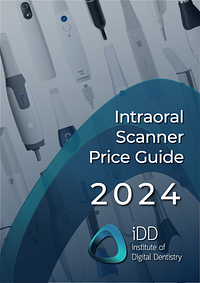
Cost is the number one barrier for all clinicians who want to start getting into digital dentistry and intraoral scanning. That is a proven fact.
To help you navigate all the numbers, we have outlined the prices of some of the latest scanners available.
Enjoy the review.
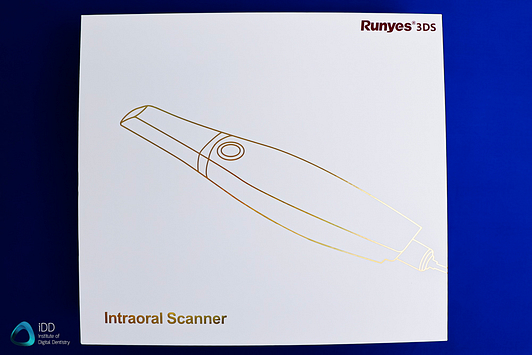
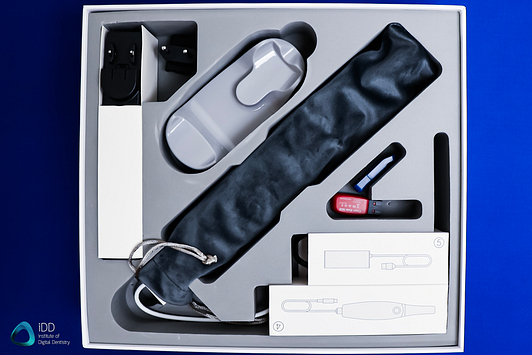
Unboxing the Runyes 3DS 3.0 scanner.
Runyes 3DS 3.0 Review Overview
Evaluation Ratings
Scanning Speed
Scanning Flow
Scanner Size
Ease of Use
Scanner Software
Investment Cost
Additional Features
USB/CART
USB 3.0 Connection
Wireless Scanner
Caries Detection
Software Apps
Model Builder Only
CAD/CAM Software
Relies on 3rd Party Software
Subscription
Requirements
No Subscription/Yearly Fees.
Autoclavable Tips
100 times per tip
Runyes 3DS 3.0 Unboxing Video
Runyes 3DS 3.0 Scanning Speed
The Runyes 3DS 3.0 is impressive! Not because it is fast, as that is almost an expectation now in 2023. But because of how much of an improvement it is in scanning speed compared to the previous generation 3DS scanner. It is not even comparable how much faster this scanner is.
We are obviously reaching the 'ceiling' of scanning speeds as this and almost every new scanner have excellent scan speeds now. The technology is well established in this regard.
Taking full arch scans using the 3DS 3.0 is easy and fast. I can easily achieve full arch scans within 30-35 seconds with this scanner. As I have mentioned prior scanning speeds these days are much less reliant on the scanner itself and more so on the operator.
At any rate it is great to see how much the company has improved their product. It easily deserves 5 stars in this regard.
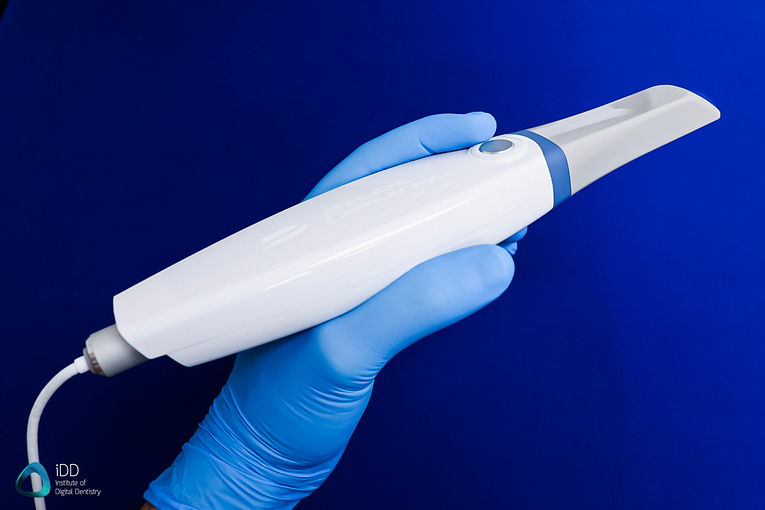
The Runyes 3DS 3.0 Intraoral Scanner
Anyone familiar with IOS scan strategies will be able to use this scanner, as this scanner is used in the same way as any other scanner on the market.
The software is simplistic but modern looking and better than most scanner software that comes from Chinese companies. When you look at the software, you can tell this is a company that has been in the IOS market for some time.
The AI built into the software is actually quite impressive. Not only does it remove any soft tissue artefacts captured automatically but it completely ignores the tongue and cheeks better than most scanner software we have seen. This is all thanks to what the company calls 'AI Scan'. You don't realise how good the AI is until you turn it off with the toggle and try scanning without it.
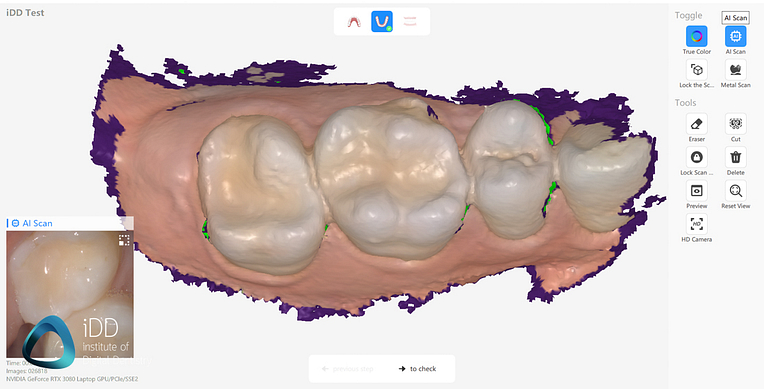
AI Scan by Runyes 3DS is quite effective at ignoring soft tissue artefacts.
The scanner is also very quick to find its place again when the scan is paused and restarted, bite scans are stitched together quickly, and removing artefacts is done well.
When taking a scan using the Runyes 3DS 3.0, the scanning image fabricated by the software has a cartoony texture. Like its predecessor the unrefined scans lack detail. They look a little 'noisey' with lots of scan data 'flakes' appearing on sharp edges. It is a huge improvement since the first generation scanner by Runyes which looked quite bad at this stage.
After a refinement phase of the workflow (called 'Check'), the scans are processed. They then look very life-like (see the images below). It is overall a nice texture but still lacks some detail. Huge improvement by the company.
There are no loading screens between each scan stage which makes the workflow faster. Instead, all the processing occurs after all scans are completed. The processing time takes around 1-3 minutes depending on the size of the scan
Overall, it's an excellent scanning experience.
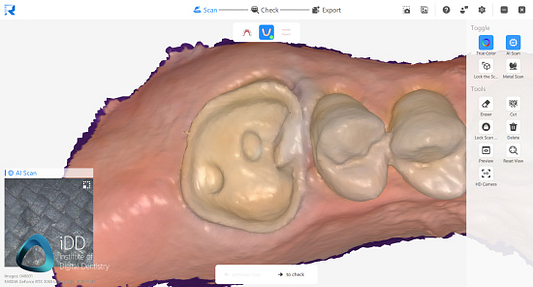
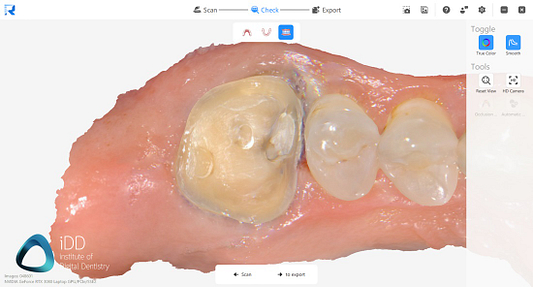
Scans before and after post-processing. Note the difference in texture, colour and realism.
Runyes 3DS 3.0 Scanner Size & Ergonomics
The Runyes 3DS 3.0 is one of the most compact scanners on the market. It has a small scanner head, but not the smallest on the market. It has an interesting shape in that it is flat and wide. This overall shape has not changed significantly since the first generation product. Not the most ergonomic shape to hold in a hand but no real complaints here.
Compared to the Runyes 3DS (first gen) the 3.0 scanner has a newly designed scanner head with the lens embedded in the end for better protection of the lens.
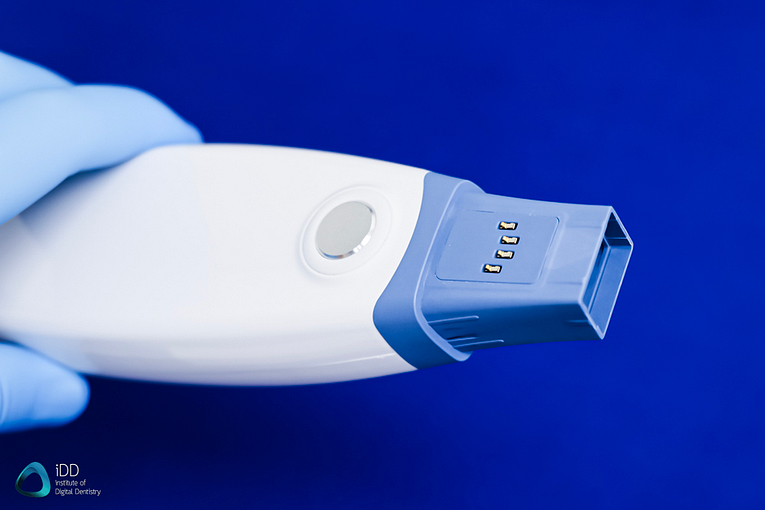
The lens is now embedded in the scanner tip to protect it.
The scanner comes with 2 different scanning tips, a regular sized scanning tip, and an additional, and a child sized tip. The new scanner tips are slightly wider and smaller size than before with a smaller mirror angle - this makes it better for scanning, especially for the posterior teeth.
The Runyes 3DS 3.0 is very lightweight at 210 grams. It weighs less than most other scanners on the market. For reference, the weights of other scanners in this price range: Heron IOS (150 grams), Medit i700 (245 g), Medit i500 (280 g), and Shining 3D Aoralscan 3 (240 g). The more expensive scanners on the market are much heavier than the Runyes 3DS 3.0, such as the 3Shape TRIOS 4 (340g), CEREC Primescan (457 - 525g), or iTero Element 5D (~500g).
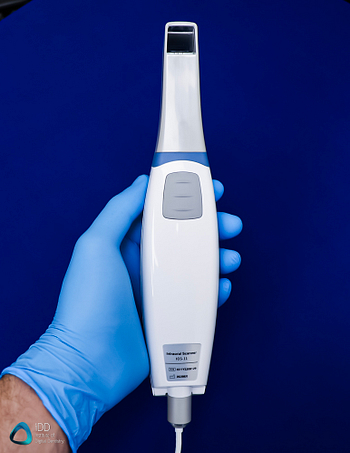
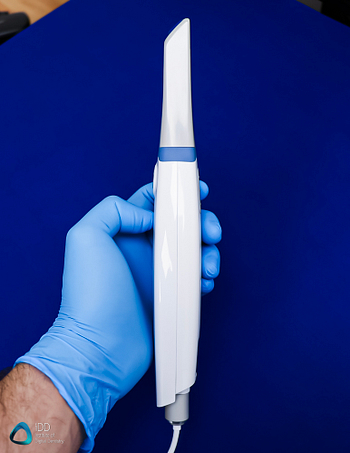
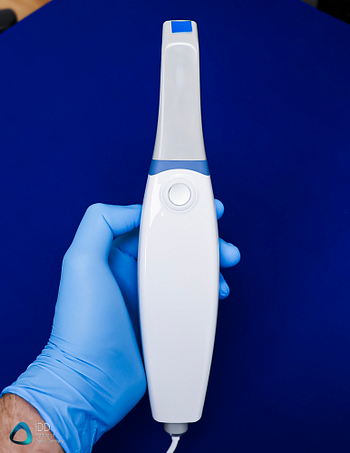
Lightweight and quite decent build quality given the low price of the scanner.
The Runyes 3DS has a simplistic design and it looks quite basic. The scanner has only one button at top that is used to start and stop while taking an intraoral scan. It is not a wireless scanner. A single wire is connected to the scanner via USB C. This wire at the back of the scanner is screwed on but can be removed which is an excellent design choice. This detachable wire makes it easily to replace if it ever gets damaged but avoids it being accidentally detached during scanning. The build quality overall is above average for a Chinese intraoral scanner.
Unfortunately, the scanner is not direct to PC. Rather the wire from the scanner goes to a small connection hub which has an AC power connection and a USB 3.0 that goes to the computer. This is much better than the old (and gaudy), scan docking station that was used in the Runyes 3DS (first gen).
Update 2024 - the new Runyes version V3 Pro is a simple USB-C connection with no power cable required any more. Great to see the company listens to feedback and this is much better.
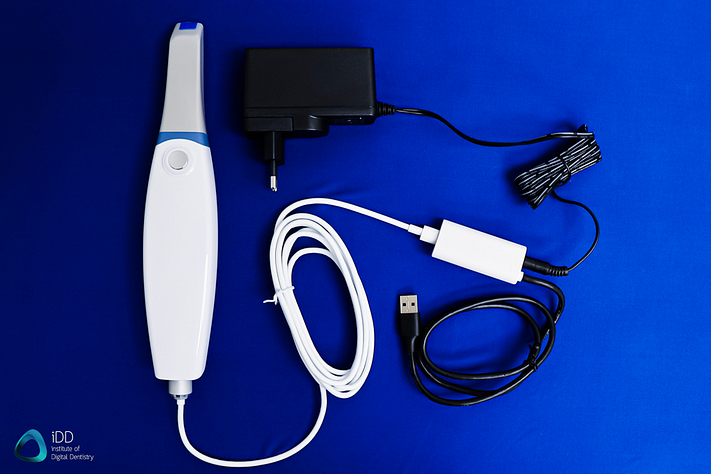
The cables required to connect the Runyes 3DS 3.0 scanner.
Other features of the Runyes 3DS 3.0 is the LED light around the scanning button. This gives the user visual feedback if the scanned is connected or not and if the scanning process is working by shining blue or green. This button can also be pressed and held down during scanning to progress through the workflow, but there is no remote control function per se.
One curious thing about the scanner is that it requires a USB license dongle to be placed at all times. Rather than use online licensing, a dongle is used (seen below - the blue USB). This is fine but just make sure never to lose it as the software will not start up unless it is inserted.
Lastly, the Runyes 3DS 3.0 is a calibration-free scanner. This is becoming the market norm with scanners such as TRIOS 5 also becoming calibration free.
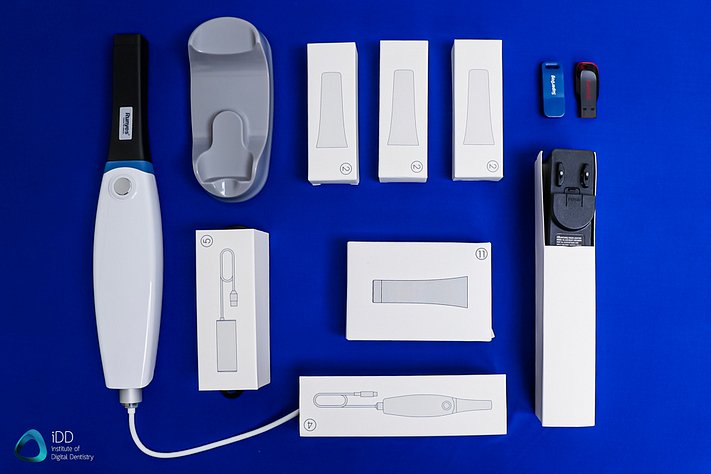
Everything that comes in the box with the Runyes 3DS 3.0
Runyes 3DS 3.0 Mirror Heater
The Runyes 3DS 3.0 IOS has an inbuilt heating resistor behind the mirror in the scanner tip. This is used to heat up the scanner mirror and prevent fogging.
In the last generation scanner a heater was on the docking station (like CEREC Omnicam) and we are thankful the company has stopped designing it in this way.
Like virtually every scanner on the market using some form of fan or heater, this makes it much easier to scan in the mouth without condensation issues on the scanner tip. A big improvement compared to before.
One thing to note about the heating resistor used in the Runyes 3DS 3.0, is that its super quick to heat up the mirror. Allowing it to be used immediately after start up with no issue. Also instead of a fan, this means there is minimal noise from the scanner.
Full Arch Scanning with the Runyes 3DS 3.0
The Runyes 3DS 3.0 handles full-arch scans very well. Much like most new scanners on the market now. This scanner can compete with much more expensive scanners on the market on scanning alone.
The scanner has an impressive scan speed, impressive AI, picks up where it is stopped quickly, and an inbuilt fan that prevents fogging and enables long periods of uninterrupted scanning.
It is used with a similar scanning protocol as all other scanners. I could easily carry out full arch scans within 30-35 seconds. I tested the scanner in full arches, quadrants, metals, edentulous areas, rehabs etc. It did a good job regardless.
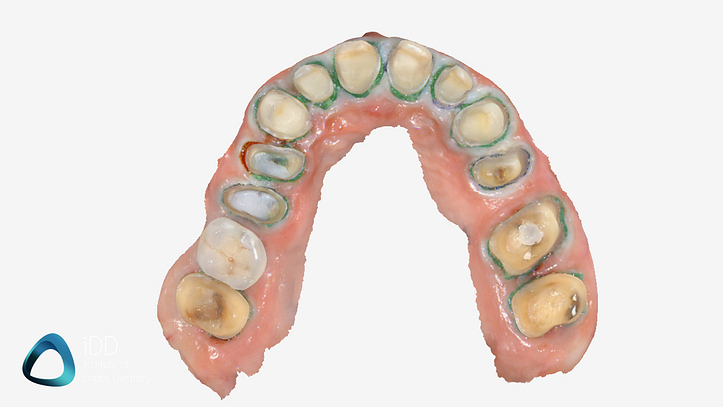
Full Mouth Rehab Case scanned with Runyes 3DS 3.0
Regarding accuracy, no research exists about the Runyes 3DS 3.0, which can be said about the majority of new scanners. The technology is simply outpacing research. The company states that the scanner can achieve full arch accuracy of 20 microns. When we compared scans taken using the Runyes 3DS 3.0 to other IOS devices we could not see a significant difference.
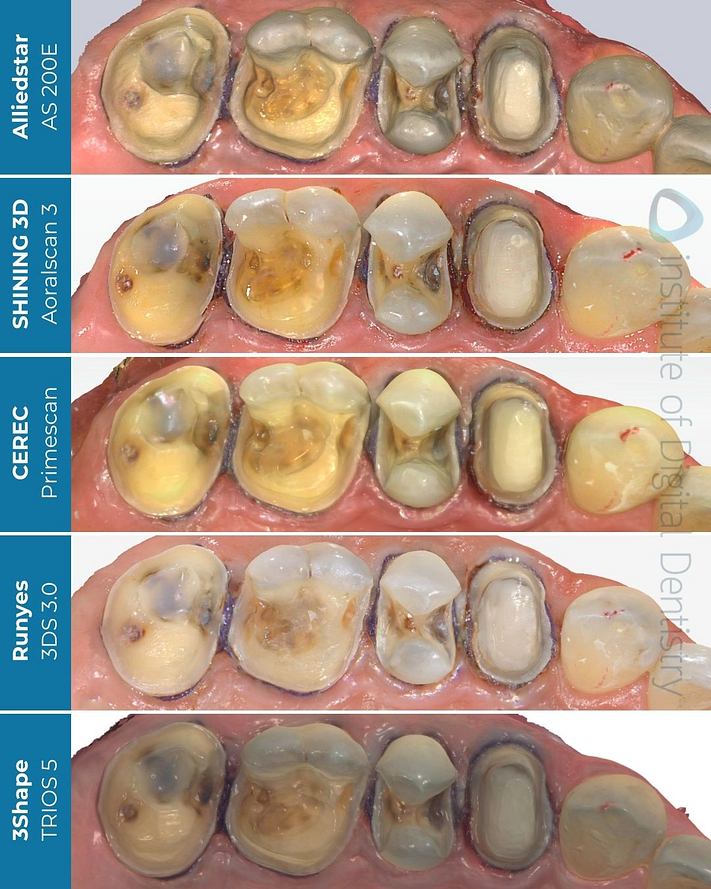
Runyes 3DS 3.0 does well with quadrant scans and is accurate when compared to a number of different scanners.
Is the Runyes 3DS 3.0 Calibration-free?
Runyes claims that calibration is not required for the Runyes 3DS 3.0 IOS unless there is an external shock to the scanner (such as dropping it). The scanner also does not come with a color calibration tool.
The benefit of not needing a calibration tool is that the user does not have to worry about calibrating the scanner before cases and will save time. The downside is that the user will not know if scanner accuracy is optimal and whether the scanner is performing correctly.
Runyes 3DS Software
The software that runs the Runyes 3DS 3.0 scanner is called Runyes 3DS Plus. You can download it with the enclosed USB (not the blue license one).
It is intuitive and easy to use, and much better than most other Chinese scanner software which often lack basic features like patient management etc. It even has a model builder! Honestly quite impressive software for a low-cost scanner.
The software makes the workflow as efficient as possible and follows basically every other scanner on the market. You start the scanner software. You enter patient details. Fill in a lab form. And then proceed to scan. All the usual scanner software functions such as analyzing occlusion or reduction space, editing scans, removing any scan data etc, are all present in the software.
Although it does not have apps, the company has innovated in the workflow of scanning. When you start a new case you are asked to select between 4 workflows - Health Report (examination scanning), Restoration, Implant or Orthodontics. This is quite neat to see in a very economical product and is a testament of the company trying to innovate in the software space.
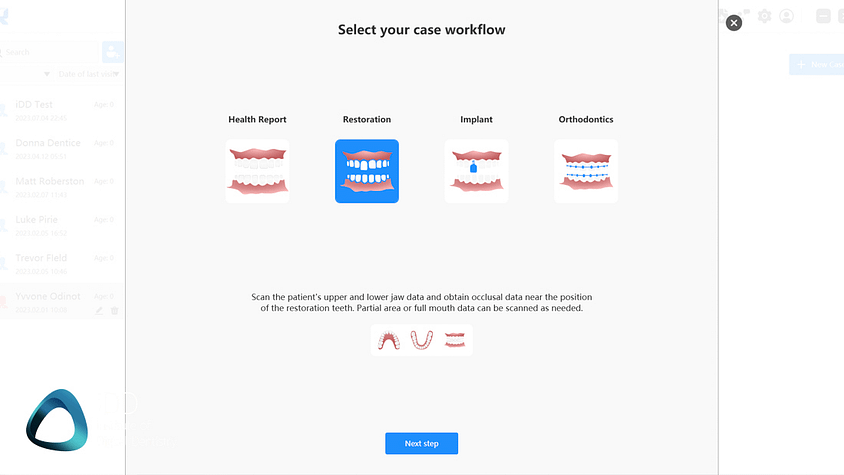
Select your workflow. A neat feature by Runyes Medical.
Runyes 3DS 3.0 Ease of Use
As with almost every scanner on the market, the Runyes software makes the workflow as easy as possible.
The workflow follows the standard step-by-step progression that is identical across every system on the market nowadays.
The typical workflow is as follows:
- Filling out the patient details
- Scanning the preparation
- Scanning the opposing teeth
- Scanning the bite
Using the software is easy and the processing of scans is done quickly. As mentioned above, it tries to make it even simpler with 'select your workflow' options.
The software itself works well and has a great viewer and sharing case options. Some things are missing however, for example, the material options in the lab sheet are limited to PMMA, NP Metal, Composite or Zirconia. Where are the lithium disilicates?
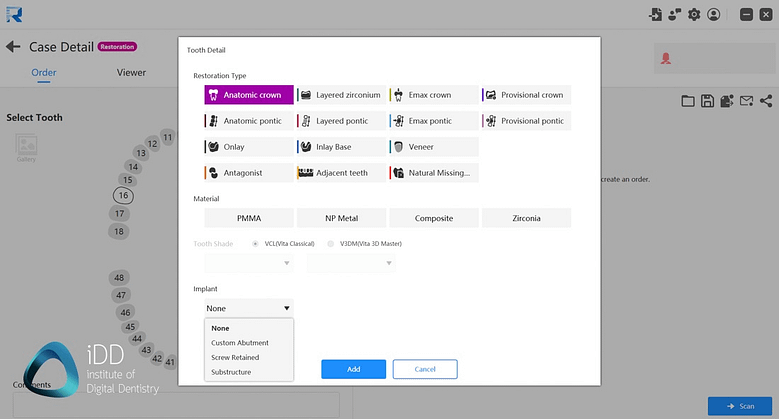
Runyes Lab Form is easy to use but lacks some options.
Overall the software works very well. As mentioned above it even has a model builder. This has to be one of the easiest model builders to use in the entire industry. You simply line up the mode along a X-Y axis and click Add Base. Voila, your models now can be exported with a base. It is impressive, easy to use and great to see in a low-cost offering.
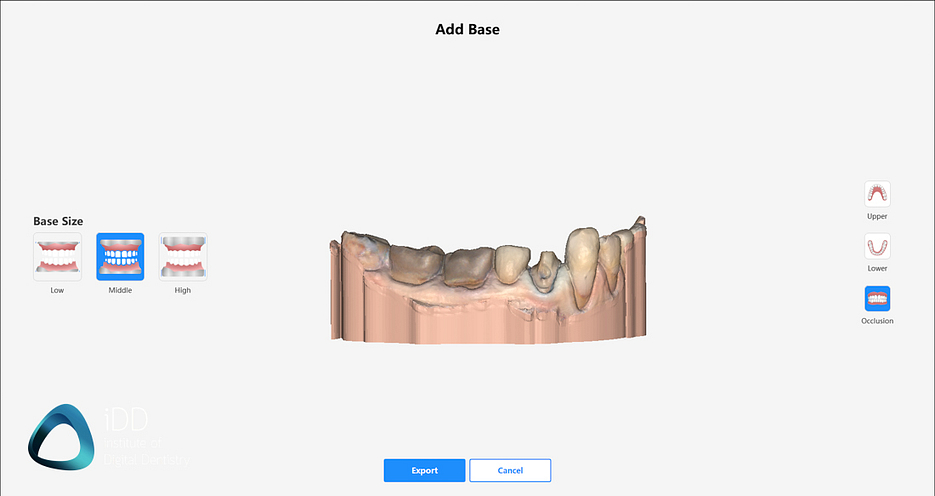
The model builder in the Runyes 3DS plus software.
The software however doesn't design any prosthetics. This is not CAD software. It is a scan and send solution. For those looking to carry out the entire workflow in-house, this scanner will need to be combined with third-party CAD software (like exocad).
Is the Runyes 3DS 3.0 an Open or Closed Scanner?
The Runyes 3DS 3.0 IOS is entirely open. The software enables easy exporting of scans in multiple different formats. This includes the popular STL file type but also PLY and OBJ - offering both is quite rare and impressive again. It can also export in exocad, 3Shape, BlueSkyPlan, Asiga, Trident and Dental Wings formats.
Files are exported locally into the patients windows folder on the computer and can be shared via the Runyes cloud.
You will primarily use STL, as this is the most widely accepted scanning format across labs and software, however PLY is becoming more popular too for the colour.
One key distinction is that the STL file is NOT a color file. Although the scanner scans in color, you will be designing on a monochrome model when exporting in STL and opening in design software. PLY files include color details, and it is great to see this being offered as an export option. The software makes exporting scans straightforward.
Invisalign users: for those of you who provide Invisalign treatment for their patients, Align will NOT accept Runyes 3DS scans for Invisalign treatment. You will need to consider other aligner options. This is no reflection of the scanner itself.
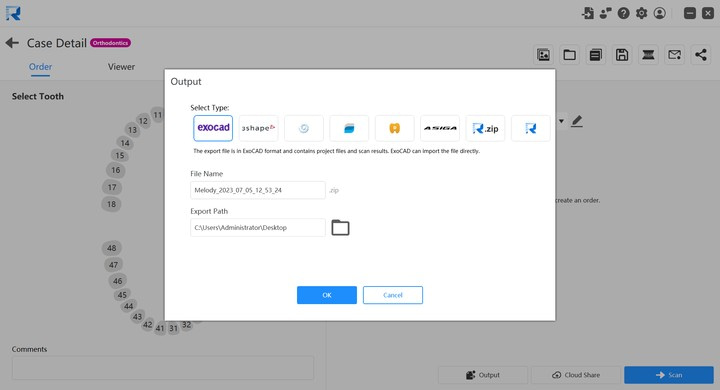
Files can be saved in monochrome STL or colour PLY + OBJ.
What is the Cost of the Runyes 3DS 3.0 Intraoral Scanner?
The Runyes 3DS 3.0 scanner is one the most affordable scanners on the market.
The recommended retail price of the scanner is $9,500 USD.
The cost makes its performance even more impressive. Let alone the software features which are not seen in scanners that are much more expensive - e.g. a model builder.
An ongoing cost you need to consider is the scanning heads. Runyes 3DS 3.0 has removable and autoclavable scanning heads, which provide ideal cross-infection control. This feature has become the norm across the entire IOS market.
The autoclavable scanning heads have a limit of 100 autoclave cycles at 134 degrees Celsius, after which they will need to be replaced. The cost of each scanning head is $20 USD ($0.20 USD per scan).
Lastly, make sure you buy a computer/laptop with sufficient specs to run the scanner.
Runyes 3DS 3.0 Yearly Fees / Subscription
The Runyes 3DS 3.0 has no yearly fees or subscription costs. The omission of subscription/yearly fees is becoming increasingly common in the IOS market. Low cost and subscription-free is the way these Chinese scanners are going to penetrate the market.
There are no cloud storage either. So no costs for that too.
Review Summary

To summarize, this is our in-depth review of the Runyes 3DS 3.0 intraoral scanner. We have focused on the clinical aspects rather than technical specifications.
The scanner impressed us. It is just a complete upgrade over its predecessor, the Runyes 3DS. Basically, that scanner was hard to recommend, but this new generation scanner is easily one of the best low-cost scanners on the market.
The price wars are well in place in the IOS market and if there was ever an example of that, it is this scanner with decent software, a model builder, fast scan speed, great AI - all for under 10,000 USD.
The scanner worked very well in almost all clinical situations thrown at it. Whether it was quadrant scans or full mouth rehabs, implants or metals. It scanned well.
There are some downsides. The scanner does many things right for an impression replacement tool, but it does seem to have some what low details in some scans even after post-processing. This becomes even more evident when zooming in. However this did not ever seem to impact accuracy of the scanner.
The other part that impressed us is the software. The scanner software although a little simple, worked well and even has a model builder in it! The company has also tried to keep up with the competition with health report features. For a low-cost option, this scanner does a lot right. I only wish it was direct to computer USB, rather than requiring a connection hub and being connected to a wall socket.
We are once again impressed by the performance of this scanner given its affordability. It is quite interesting seeing the scanner market develop and the Chinese scanners have well and truly caught up in this space it seems.
If there is anything we did not cover, or if you have a question, please leave a comment below.

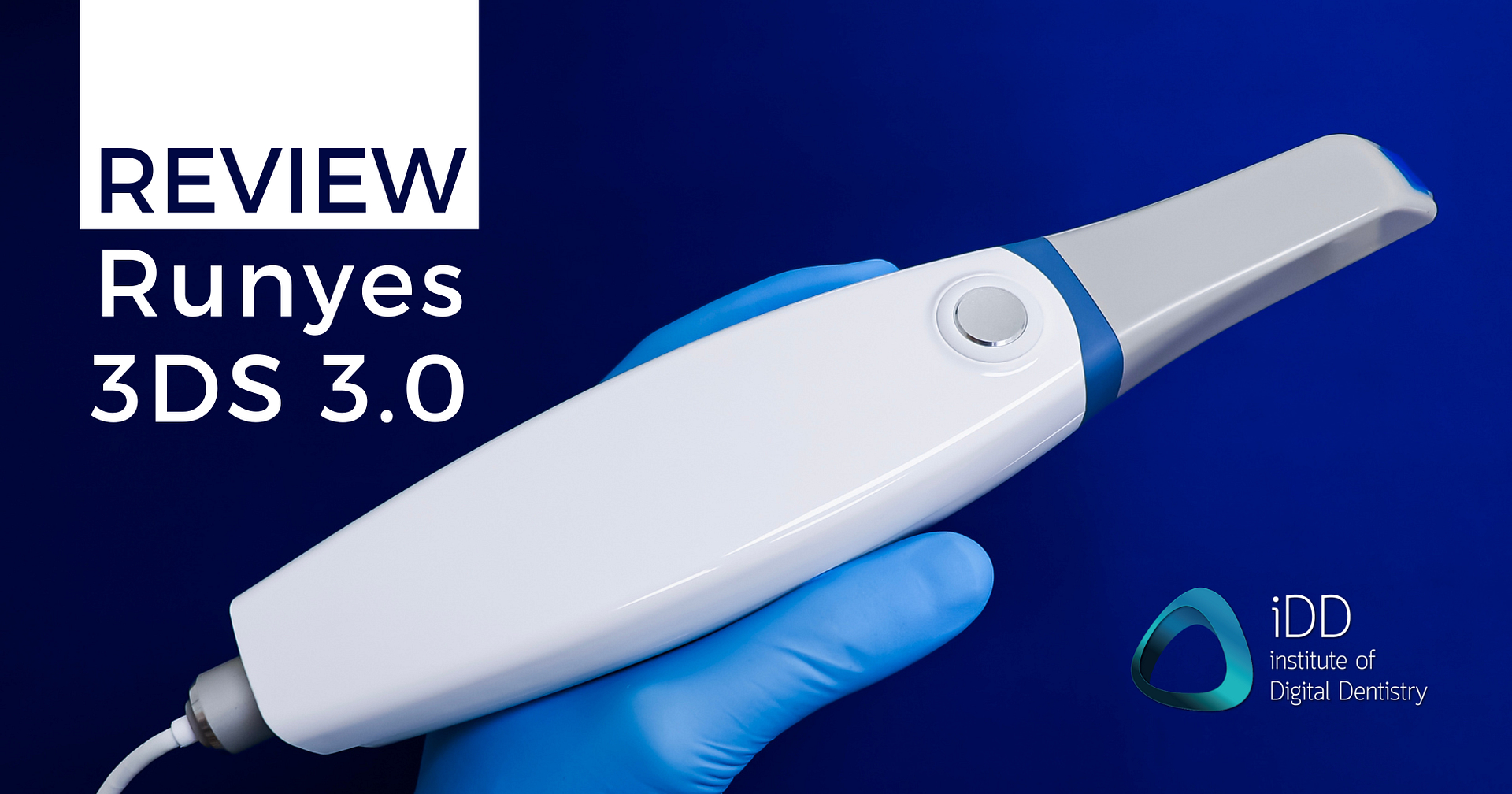
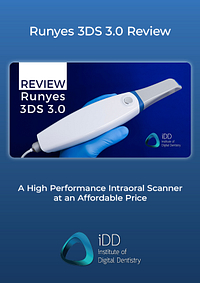
I attended a presentation on this scanner recently in my country Ghana and even though I am new to scanning, I was quite impressed by its capabilities.
No doubt. For a low-cost scanner it is quite good.
Is the scanner confocal or triangulation
Triangulation
Hi doc, I have tried Megagen’s R2i3 version of this Scanner, it is quite impressive for the price, in this version it can be used with the USB-C cable directly to the PC, do you know if the Runyes version (V3 Pro update) can already be used directly with usb-c? or if it brings other improvements?
Hey Pablo, yes with the update to Runyes V3 Pro (and all rebranded versions) the company has changed the cable to be USB-C Only. Otherwise it is the same scanner.
Great article! Thank you for sharing.
Where can I buy the 3.0 Pro version of this scanner?
Contact your local Runyes distributor.
can I edit a saved scan if the patient come back for other treatment. and if yes ..how ?
Hi doc. How many editor modules have the Runyes software?
Do you mean CAD or editing mesh? Currently no CAD.
thank you for this review.
but why is the button for printable copy isn’t working?
Thanks for letting us know! I will get our team to fix it asap.
Would you prefer Runye’s over panda 3 or helios 500 I can’t make the decision right which in this low-budget would give a smoother implant full arch scan experience?
Hey there. Thanks for your info, if you are focusing on getting the smoothest implant full-arch scan experience within a low budget, I’d lean towards Runyes / Helios 500.
That said, the Panda with its ergonomics could be a close second but the small scan head can be an issue for full arch implant scans.
Helios 500 in my testing has the best accuracy for full arch implants (still not the level of premium scanners though) out of these 3.
Hope that helps.
Thanks for a great review. Two questions: 1) Do they provide software updates free? 2) How has the clinical accuracy of you crowns been? Equal to the more costly options? Lastly, try Blender 4 Dental (B4D) for a low cost software with no license fees, just one time cost, for you prosthetic work. Has amazing capabilities.
Hey there
1) Yes
2) For tooth-bourne restorations it is good. Full arch implants etc not good. Not equal at all to more costly options.
3) I have tried B4D. Great software for the cost. But you do give up a fair bit in UI/UX compared to dedicated dental software.
Hello doc, thank you for this amazing review
If you had the choice of buying a Runyes 3DS 3.0 for $4,000 and a Helios 500 for $5,800, which would you choose? Thank you.